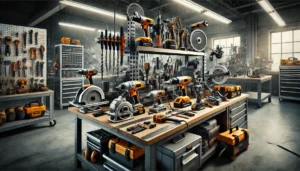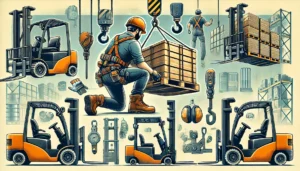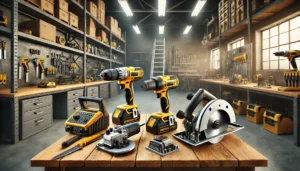Picking the right fastener is a very important factor, wrong picks can affect the safety and durability of the construction projects and pose hazards. Various fasteners like screws, nails, bolts, and anchors are crucial in connecting parts of a structure together and should be chosen with proper knowledge of their strengths. Lack of Information can lead to structural failure, costly maintenance, and increased safety risk. Therefore, builders, engineers, and DIY people need to be aware of some factors to fasten manuals.
Comprehending Fastener Categories
There are a variety of fasteners, with each catering to specific fastening needs:
- Nails: Commonly used with wood, nails fasten materials together by being hammered into the material. They work best in situations where peripheral strength is greater than tensile strength, as seen in framing and decking work.
- Screws: Stronger and versatile fasteners that have threaded shafts for better grip with wood and metal. They are more suited for work needing a stronger bond that has to be disassembled later.
- Bolts: Large and heavy duty fasteners that serve the purpose of a stronger tensile grip. Perfectly used with nuts and washers, they are more suited to structural steel connections and heavy timber constructions.
- Anchors: These are needed to fasten elements to concrete blocks or walls, which means that anchors need to be able to open in the concrete lock and keep the fastening securely in place. They serve the purpose of fixing building members on firm supports.
Critical Elements In Selecting a Fastener
- Material Compatibility
The nature of the materials needing joining determines the type of fastener to be used. For example, when fasteners are to be used with treated lumber, those that are made of or coated with materials resistant to the chemicals used in treatment should be used. When metal parts are to be joined, the metals used in the fastening device should be of the same nature in order to prevent galvanic corrosion. In corrosive environments, using stainless steel or galvanized fasteners is durable.
- Load Requirements
It is very important to know the load that the fastener is supposed to carry. For put in place constructions, fasteners should suffice both the static loads (these are forces that are permanent or applied slowly) and dynamic loads (those that change over a duration of time. Example; wind forces or vibration). It is advisable to follow the building regulations, and constructional rules to check for the correct type and size of fastener capable of withstanding such loads.
- Environmental Conditions
Environmental features have a great impact in the operation of fasteners. In coastal regions, for instance, the elevated salt levels present in the atmosphere increases corrosion and more so, requires the use of stainless steel or specially coated fasteners. In places where temperature changes significantly occur, fasteners must be able to withstand the expansion and contraction of the material.
- Fastener Coatings and Finishes
Coatings and finishing serve the purpose of improving fasteners features most importantly its strength and appeal. Common coatings include galvanization, which places a precision zinc layer to the fasteners in order to resist the rust and ceramic coatings for enhanced corrosion resistance. Different styles of coatings can be selected by considering environmental exposure and aesthetic factors.
- Thread Types and Sizes
The thread pattern of a fastener determines the amount of force it can hold, and the type of materials that they can be used on effectively. Coarse threads are mostly preferred in wood application since they provide a better grip on softer materials, fine threads are mostly used in metal where high tensile strength is needed most. Adequate selection of the thread type is recommended to enhance performance and prevent damage to the materials.
- Length and diameter
A fastener needs to have the correct height and diameter so that it serves its purpose properly. When a fastener is too short, it does not have holding power while too long a fastener will hold onto unwanted areas. As a general rule, a screw or nail should penetrate at least half the thickness of the bottom material for a secure hold.
- Ease of installation and accessibility
How the fastener will be installed is very important concerning areas that are limited in space. For example, in tight places, screws with a slotted head are more difficult to use than Philip head or square drive self-tapping screws. Further, self-tapping screws can also be useful in that they eliminate the need for drilling holes.
- Aesthetic considerations
Where appearance is important, fastening has an impact on the final outcome in areas like finish carpentry and cabinetry. It is possible to increase the attractiveness of the project through the use of finish nails or screws with decorative heads. There are also fasteners that are made to be hidden under the finished surface for an unblemished surface.
Common Mistakes to Avoid
- Using Incorrect Fastener Material: If trivial factors or issues are neglected, your use of fasteners may result in corrosion and structural failure. Using steel fasteners on treated wooden material is a great example of poor practices. Using uncoated fasteners will cause rapid corrosion due to chemical reactions and will tarnish the material.
- Overlooking Load Specifications: Overlooking load-bearing factors will often result in too weak fastening components. It is critical to analyze how much force is going to be applied on the joint and pick suitable fasteners.
- Neglecting Environmental Factors: A fastening component will not achieve its intended purpose if factors in which it is used are ignored. For example using fasteners not coated in a humid environment will over time lead to deterioration and rust.
- Improper Installation: Wrong methods of fastening will also have poor outcomes. The main issues include wrong use of torque, for example extreme slackening or excessive tightening.
Conclusion
Every construction project has its own intricacies, from understanding the materials and environmental conditions to the load requirements and even the installation practices. As a result, picking the right fastener for each construction project tends to be the most difficult. However, with ample consideration and attention, avoiding the common pitfalls can become easy and the aesthetic, structural, and durability integrity of the venture is achieved. But if the path gets overwhelming, a word with the fastener manufacturers or even a structural engineer can always give you more tailored insights.










